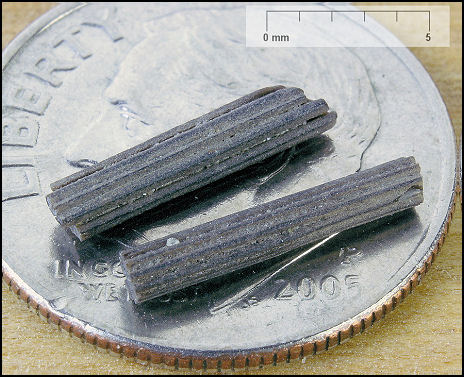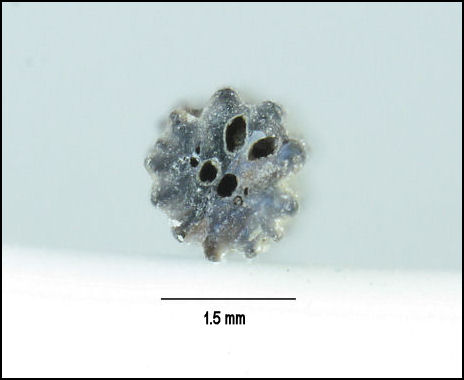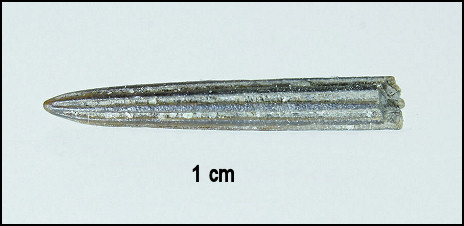|
Billfish While still open to debate, the long tapering ridged spines of the genus Cylindracanthus are most often referred to as a rostrum. These are fragile and the vast majority of the finds in Monmouth County, NJ are just small fragments typically less than centimeter in length. The rostra are cylindrical, gradually tapering to a point and possess longitudinal ridges, the base or broken ends will show two or more small holes. With no associate skeletal remains the true nature of Cylindracanthus is still unresolved. I think Matt Friedman sums it up nicely: “Cylindracanthus has endured a tumultuous systematic history, being variously associated with chimaeroids (chondrichthyans related to sharks and rays), tetraodontiforms, billfishes (see summary in Schultz, 1987) and, most recently, sturgeons (Parris et al., 2001) … None of these interpretations is altogether satisfactory and no specimen of Cylindracanthus has ever been found associated with additional skeletal remains that provide further clues to either its systematic position or anatomical identity.”¹
Cretaceous Cylindracanthus rostra fragments are
usually less than
The distinctive lines or
wrinkles that emanate from
the center of the
¹Ray-finned fishes Osteichthyes, Actinopterygii from the type Maastrichtian, the Netherlands and Belgium. Friedman, Matt, 2012: |


